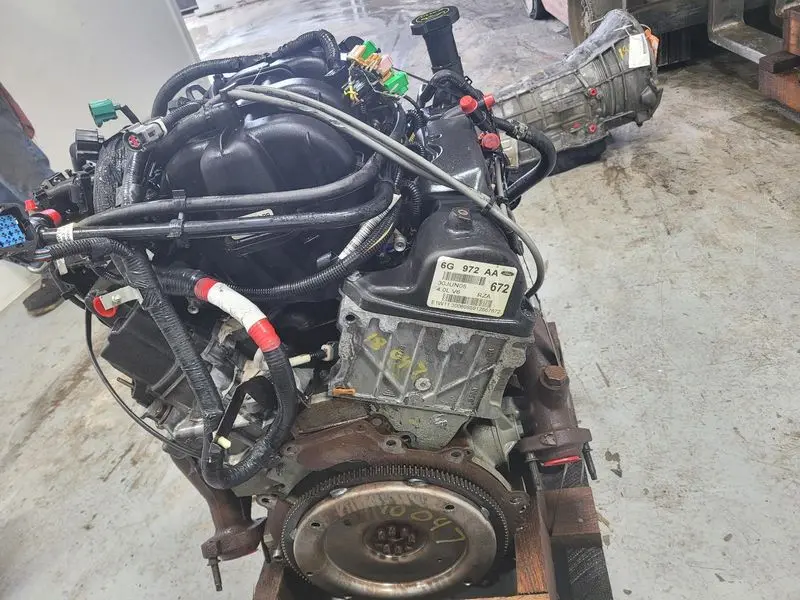Explore the Key Features of the 2.2 Ford Ranger Engine and Its Fuel Efficiency
Explore the Key Features of the 2.2 Ford Ranger Engine and Its Fuel Efficiency
Blog Article
What Makes an Automobile Engine Run Efficiently: Leading Tips for Ideal Care
The smooth operation of a vehicle engine is essential to both efficiency and longevity, making ideal treatment an important obligation for lorry proprietors. What particular steps should you prioritize to guarantee your engine remains in peak problem?
Routine Oil Adjustments
One of one of the most critical elements of car upkeep is guaranteeing your engine receives routine oil changes. Engine oil lubes interior components, minimizes friction, and aids maintain ideal operating temperatures. Over time, oil breaks down because of heat, impurities, and the all-natural byproducts of combustion, resulting in reduced effectiveness and possible engine damages.
Many suppliers recommend changing the oil every 5,000 to 7,500 miles, however this interval can vary based on driving problems and oil kind. For circumstances, artificial oils might permit longer intervals between modifications. Normal oil changes not only improve engine performance but additionally enhance fuel efficiency, as tidy oil advertises smoother operation.
Overlooking oil modifications can result in sludge build-up, which hinders circulation and can cause severe engine concerns. It is vital to examine oil levels frequently and monitor for any kind of unusual modifications in shade or consistency, which can indicate contamination or deterioration.

Preserving Coolant Levels
Maintaining proper coolant levels is vital for stopping engine getting too hot and making certain optimum efficiency. The coolant, commonly a mix of water and antifreeze, distributes with the engine, absorbing heat and preventing thermal anxiety. Not enough coolant can bring about increased engine temperatures, which might cause severe damage or even overall engine failing.
To preserve ideal coolant levels, regularly inspect the coolant reservoir, typically found in the engine bay. Guarantee the coolant is filled up to the suggested mark, as shown in your lorry's owner manual. It is a good idea to examine the degrees at the very least as soon as a month or eventually trips, specifically during severe climate condition.
If you notice that the coolant degree is continually low, there may be a leakage in the air conditioning system, which should be addressed without delay to protect against more problems. 2.2 ford ranger engine. Additionally, purging the coolant system every 2 to 3 years can assist eliminate any kind of collected debris and make certain efficient warmth exchange
Checking Air Filters

It is recommended to examine the air filter every 12,000 to 15,000 miles, or more often if driving in adverse or dirty conditions. A simple visual inspection can frequently expose whether the filter is dirty or damaged. If the filter shows up blemished or has noticeable dirt buildup, it should be changed quickly.
Using a high-grade air filter created for your certain car model can better improve engine performance. Additionally, some cars might take advantage of multiple-use filters that can be cleaned and reinstalled, providing a environmentally friendly and cost-efficient choice.
Inspecting Spark Plugs
Ignition system are necessary parts of a vehicle's ignition system, directly impacting engine performance and efficiency. They create the spark that fires up the air-fuel mix in the combustion chamber, assisting in the engine's power generation. Routine assessment of ignition system is critical for maintaining optimal engine function and preventing potential issues.
Dark soot or oil deposits can suggest inappropriate combustion, while a white or raw appearance may suggest getting too hot. Both problems call for immediate interest to avoid more engine damage.
It's suggested to inspect stimulate plugs every 30,000 miles, or as recommended in your vehicle's owner guidebook. Furthermore, think about replacing them according to the maker's guidelines, as used or old ignition system can bring about misfires, reduced gas efficiency, and increased discharges.
Tracking Tire Pressure
Under-inflated tires can additional hints lead to lowered gas effectiveness, boosted tire wear, and compromised handling. Normal tracking of tire pressure is important for ideal vehicle procedure.
Tire stress need to be inspected at the very least when a month and soon trips. Use a reputable tire pressure gauge to determine the pressure when the tires are cold, ideally prior to the car has actually been driven for at the very least 3 hours. Describe the lorry's proprietor guidebook or the placard situated on the motorist's side door jamb for the supplier's advised stress degrees.
It is necessary to keep in mind that tire stress can fluctuate with changes in temperature; a decrease of 10 ° F can lead to a 1-2 psi decrease in pressure. Additionally, visually inspect tires for any signs of wear or damages during your monitoring regimen. Keeping appropriate tire pressure not only enhances lorry security however also improves fuel effectiveness and prolongs tire life, inevitably adding to a smoother engine efficiency.
Conclusion
To conclude, maintaining an automobile engine's her comment is here smooth operation requires attentive focus to a number of key variables. Normal oil changes, proper coolant levels, tidy air filters, well-maintained stimulate plugs, and ideal tire pressure collectively add to boosted efficiency and long life. Adhering to these maintenance practices not just boosts gas effectiveness but likewise promotes a safer driving experience. Ultimately, an aggressive technique to engine care is vital for guaranteeing reliability and functionality over time. 2.2 ford ranger engine.
One of the most essential facets of vehicle maintenance is ensuring your engine obtains regular oil changes. Engine oil lubes internal elements, lowers friction, address and assists maintain ideal operating temperature levels. Routine oil adjustments not just improve engine performance but also improve gas performance, as tidy oil advertises smoother procedure.
Inadequate coolant can lead to increased engine temperature levels, which may trigger serious damages or even complete engine failing.

Report this page